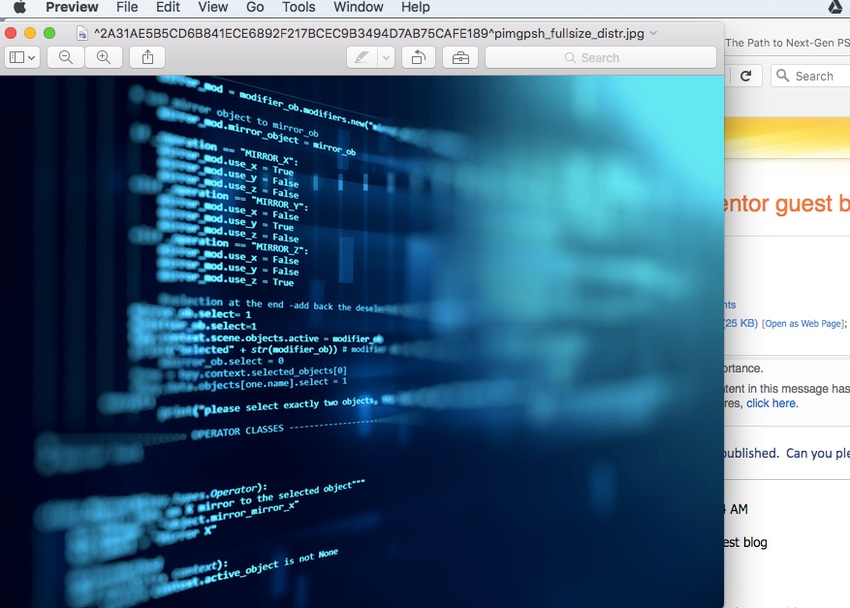Keeping operating systems and third-party software current is a vital step in ensuring your infrastructure is performing optimally and securely. For MSPs, this means keeping customers’ systems patched and up to date. With increasingly vicious ransomware attacks like WannaCry and Petya on the rise, this is more important than eve
July 10, 2017

Sponsored by Kaseya
 Keeping operating systems and third-party software current is a vital step in ensuring your infrastructure is performing optimally and securely. For MSPs, this means keeping customers’ systems patched and up to date. With increasingly vicious ransomware attacks like WannaCry and Petya on the rise, this is more important than ever.
Keeping operating systems and third-party software current is a vital step in ensuring your infrastructure is performing optimally and securely. For MSPs, this means keeping customers’ systems patched and up to date. With increasingly vicious ransomware attacks like WannaCry and Petya on the rise, this is more important than ever.
Automatically downloading all patches and updates may seem the easiest way to go to accomplish this. However, not all patches or systems are of equal importance, and not all updates are risk-free. For an MSP managing a small number of systems, deciding on a case-by-case basis what and when to update, and doing so manually, may make sense. But, as you grow, this quickly becomes untenable.
You need a policy-driven, automated approach that isn’t as time consuming and labor-intensive as evaluating every update, yet is more nuanced than “patch everything.” You need software management.
Software management is about ensuring the operating systems and third-party applications running on every system you manage are functioning at maximum effectiveness for customers. It also makes certain all systems are compliant with all applicable regulations.
While patching is a key aspect of this, software management runs deeper than that. Software management means having an understanding of what applications and operating systems are deployed on each machine and what functions they provide to the organization. It also means knowing and understanding the criticality of the functions on each endpoint and the heavy usage times that it cannot be out of commission for an update.
The costs and impact of not practicing software management vary. They range from cost overruns due to inefficiencies or misappropriated resources, to fines for not being in compliance, to lost revenue due to an outage or breach that can impact your MSP’s viability.
Finding a Software Management Solution
Software management is essential to your business’ success, and a software management solution is one way to guarantee that your efforts scale with your organization. At a minimum these five features and attributes must be considered:
Patch functionality: Patching remains front and center in any software management solution. You cannot manage your software without the capability to deploy a patch or perform an update. But for this functionality to have value to the business, other capabilities must also be present.
Policy management/automation: When you have only a handful of endpoints, it’s easy to keep track of your ecosystem and manually update when necessary. But that quickly becomes unsustainable as your customer base and infrastructure grow. Not all patches or updates are appropriate for all endpoints. Some endpoints need to be patched immediately for every vulnerability; others need only the most critical of patches. Likewise, not all updates should be immediately pushed through to all systems. Generally, compliance updates take priority over efficiency updates. Being able to set policies based on when to patch or update helps guarantee that all endpoints are treated appropriately as they pertain to the business. In addition, relying on policies and automation to decide which updates and patches to deploy eliminates manual error-prone processes and ensures that a machine is not overlooked for an update or patch.
Single pane of glass: If you’re managing a variety of operating systems and applications (and, let’s face it, who isn’t) you’re likely dealing with more than one management console. This is unwieldy and time-consuming, and introduces a greater likelihood of errors due to lack of integration and incompatibility. Being able to monitor and manage all updates and patches from a single pane of glass reduces the amount of time spent managing systems while increasing reliability.
Alerts: As a busy admin you don’t have time to keep track of every single update or vulnerability. Nor are your eyes on your systems 24/7. By deploying a solution that alerts you to issues, you can focus resources elsewhere, especially if policies and automation are in place to facilitate seamless updates.
Cost-effectiveness: A software management solution should not break the bank. While it is beneficial to supporting and running your business, it does not contribute directly to revenue that enables your business to grow. Therefore, a management solution should be able to operate within a predetermined budget.
How Kaseya VSA’s Software Management Can Benefit You
Kaseya VSA’s software management functionality enables you to stay on top of software updates and patches while taking the technician out of the process as much as possible. First, it scans your systems. Then, based on predetermined policies, it decides which patches should be deployed. Finally, it deploys the patches. MSPs can be as granular as needed when setting policies about which patches are needed, priority, timing for rollout, and more. The capability to override profiles gives MSPs additional control and flexibility over their environment.
The patching process itself is also efficient. VSA relies on peer-to-peer technology, which maximizes bandwidth and allows patches to roll out faster.
By including patching and deployment in same module, admins can monitor and manage operating systems and third-party applications from a single pane of glass. This cross-platform functionality, for both operating systems and applications, enables MSPs to now patch and manage Macs, which in the past were often unmonitored and unmanaged. This mitigates numerous risks and leads to a more secure and compliant network.
Dataprise, recently ranked one of the top MSPs nationwide, describes itself as a one-stop IT shop that seeks to align with its customers’ business objectives. A longtime VSA user, Dataprise has been able to leverage the software management in VSA to bring Macs under the same umbrella as the PCs it manages, improving the margins it delivered the process.
“VSA is an extremely powerful framework that allows us to create real, impactful automation,” said Oscar Romero, lead systems engineer, Dataprise. “Software management is so much more than just patching. Our ability to create custom agent procedures and scripts to meet any customer requirement is a game changer. It allows us to take automation to the next level, and deliver a higher caliber of service to our customers.”
Romero adds, “Kaseya’s single pane of glass is one of the most invaluable features of VSA. We live in a ‘tab-world,’ and the more tabs and consoles you need to log in to, the more complex and inefficient your process becomes. With VSA’s single pane of glass, we can see of all our modules and documentation across all platforms in one place. This holistic visibility allows us to be confident that we know the status of all our customers’ environments at any given time, and you can’t put a price tag on that.”
VSA’s software management goes beyond alerts and fixes. It also examines whether your machines are compliant with your policies and evaluates whether those policies are sufficient to ensure protection. This allows you to see the bigger picture and adjust policies that are not in compliance or offering the correct level of protection.
Finally, because software management is included in VSA, software management is less costly than in cases where software management is an a la carte offering. This makes it easy to budget for software management while enjoying the benefits it brings to your organization.
Learn more about VSA and discover how your MSP can benefit from software management.
Joining Kaseya in 2012, Miguel Lopez brings over 20 years of experience to his role as SVP, Managed Service Providers (MSPs). In this position, he consults daily with MSPs to help them solve their clients’ business problems with technology solutions. Prior to joining Kaseya, Miguel served as the director of consulting services for All Covered, a nationwide technology services company that is a division of Konica Minolta Business Solutions USA Inc. In 2008, All Covered acquired NetCor Technologies, a leading MSP that Miguel founded and managed since 1997. NetCor specialized in serving highly regulated industries such as healthcare, CPAs, law firms and retail companies.
Guest blogs such as this one are published monthly and are part of MSPmentor’s annual platinum sponsorship.
You May Also Like
